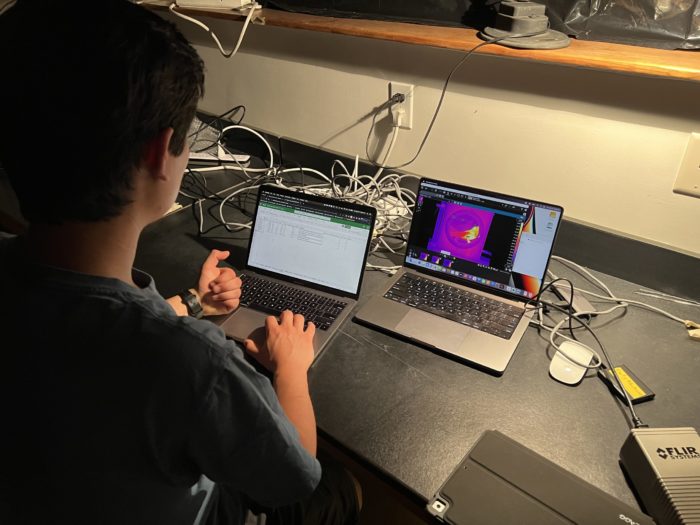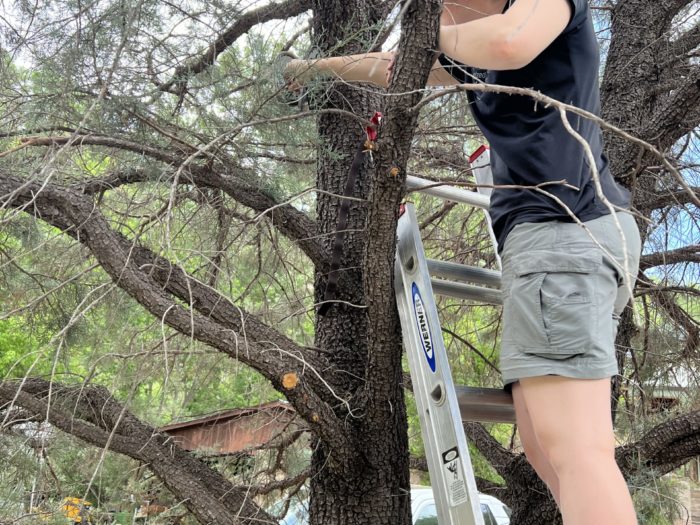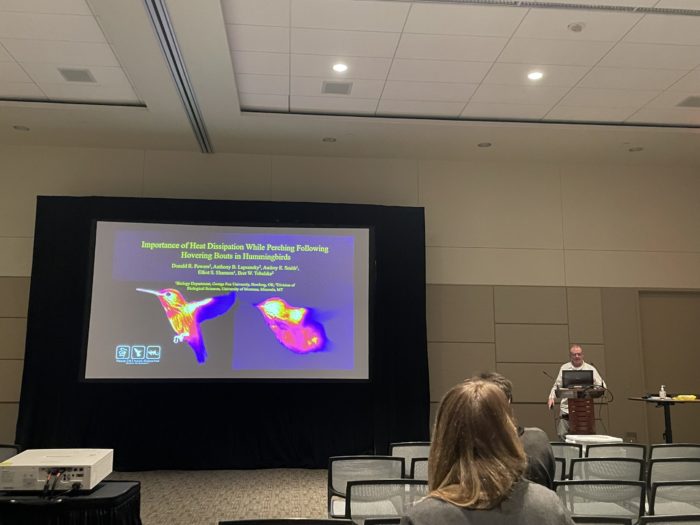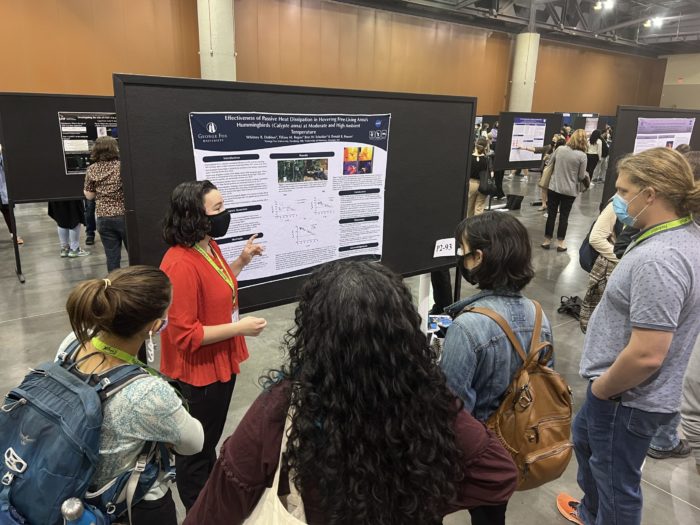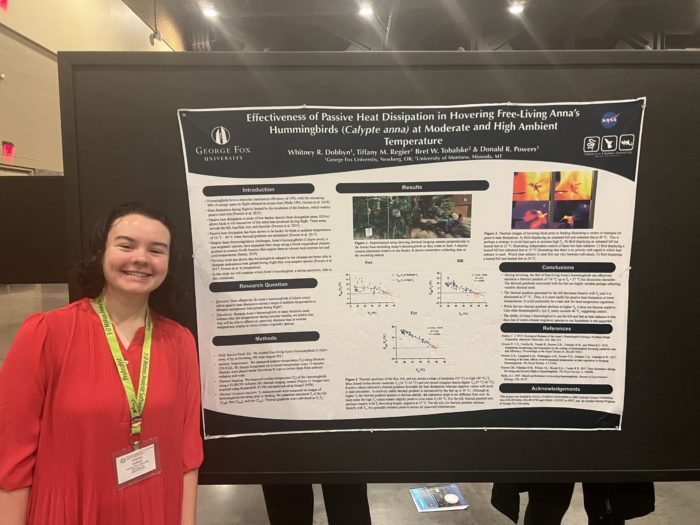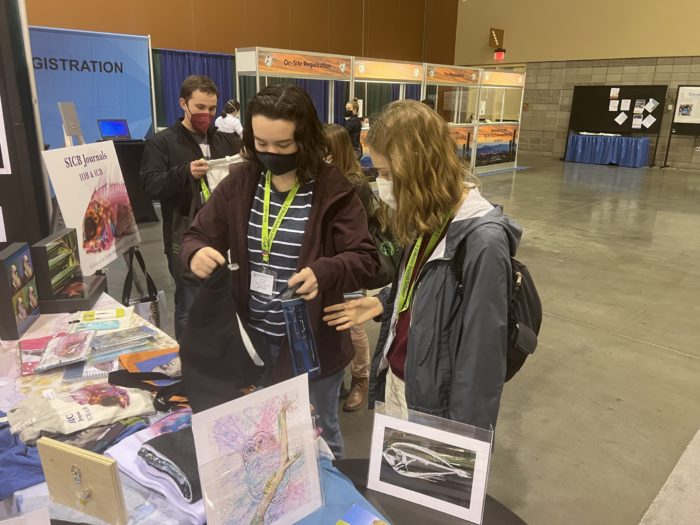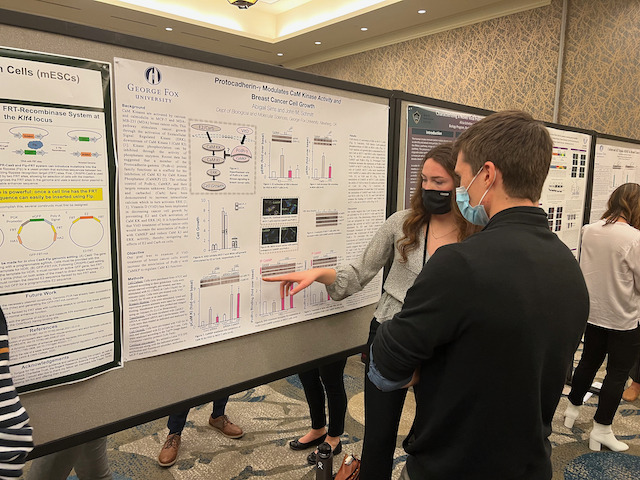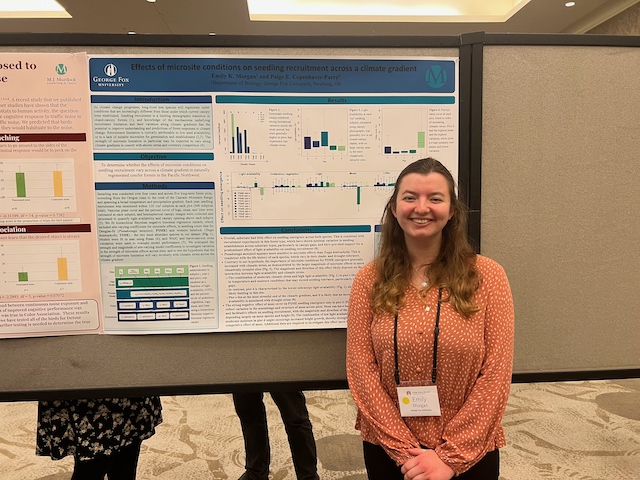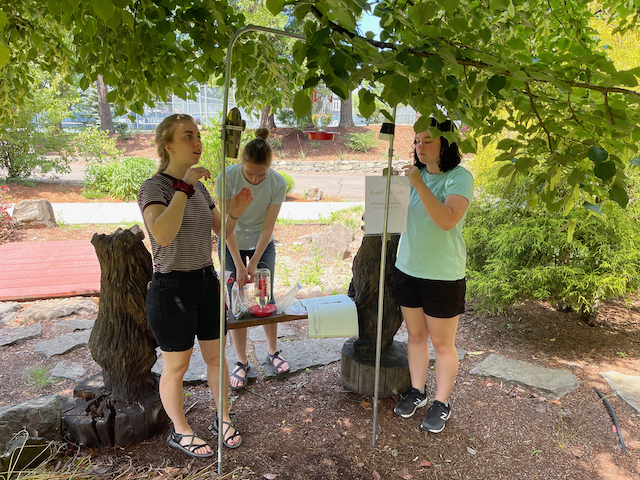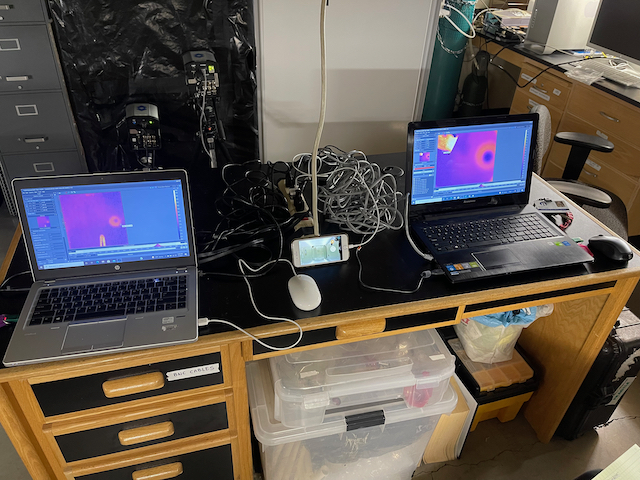After a two-year, pandemic driven hiatus from our work in the Chiricahua Mountains in SE Arizona the lab returned in full force to the Southwestern Research Station this June! This was our largest crew ever with seven students (4 from George Fox University and 3 from my collaborator’s lab at Cornell University) plus me to tackle three projects.
We recently published a paper showing that the hummingbird species we work with in Arizona had the capacity to use a shallow form of torpor in addition to the deep torpor normally associated with hummingbirds. Our evidence for the use of shallow torpor came from continuous infrared thermography at night to track shanges in the surface temperature of the hummingbirds. One concern about this method is that we needed to make the assumption that changes in surface temperature correlated with changes in metabolic state. So, this year “Team Torpor” consisting of Emily, Sophia, Santi, and Shenni constructed a metabolic chamber with a thermal window that would allow us to simultaneously measure metabolic rate and surface temperature to test the validity of our assumption that surface temperature is indeed an index of metabolic state.
Last month we used thermal imaging and thermal PIT tags to track heat transfer from the body core to the exterior of the plumage surface in collared doves. This involved using thermal imaging to track the temperature of the external surface of the bird, a thermal PIT tag glued to the surface of the skin over the flight muscles to measure skin temperature, and a thermal PIT tag inserted into the abdominal cavity to measure core body temperature. We thought we could extend this study to a couple of our Arizona hummingbird species that are a bit larger in size. Whitney took charge of this study and has spent the last couple months designing and building what was needed. The abdominal PIT tag was omitted because of the bird’s small size but they were large enough to glue a PIT tag to the skin. We built a small flight arena that allowed us to collect data both during flight and perching. All this worked extremely well.
From the work we have done the past few years on body temperature managment during flight in hummingbirds it has become apparent that dumping extra heat accumulated during flight after landing on a perch is likely important. Most of what we have learned about this comes from our laboratory work. This year we wanted to take a crack at documenting whether or not free-living hummingbirds are using the sme post flight heat dissipation strategies that we have observed in the laboratory. To do this Kendra and Emma spent many hours documenting where hummingbirds were perching around our feeder patch then took thermal images of these locations to assess the thermal environment and also attempted to place protable thermal cameras at known perching locations to see if they could get thermal images of perching birds post flight. This was certainly in many ways the most challenging of our projects!
Overall our trip to SWRS was very successful! Now it is on to analyzing the mounds of data we collected and eventually writing the papers! Below is a selection of photos from the trip for you to enjoy.

















